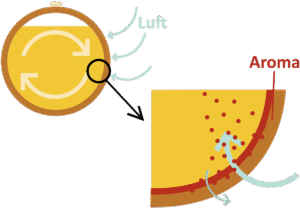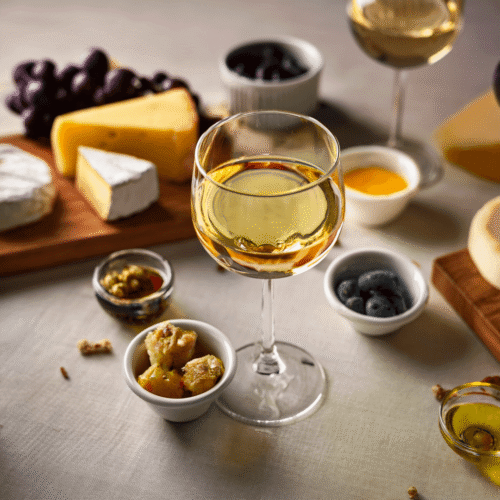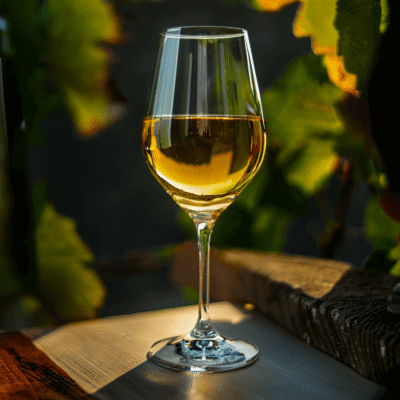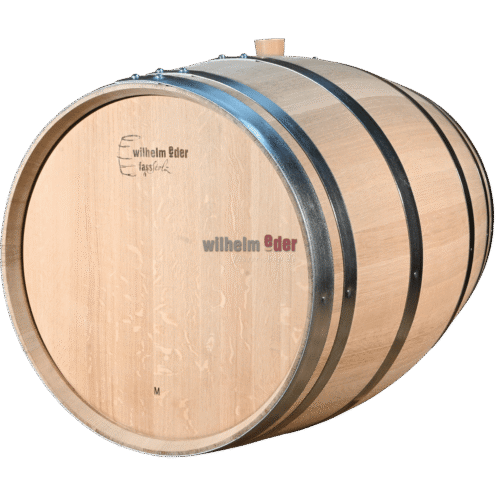Lágrima Port – Sweet Tears from the Cask
A look at the sweetest of all Ports and the art of barrel aging
When people think of Port wine, bold ruby reds or elegantly aged Tawnies often come to mind. But beyond these well-known styles lies a nearly forgotten gem: Lágrima Port, the sweetest expression of white Port. Its name, meaning “tear” in Portuguese, is no coincidence—Lágrima is a luscious dessert wine that runs down the glass like golden syrup, reminiscent of a tear. In this article, we take a closer look at this rare delicacy, focusing especially on one key element of its production: barrel aging in oak.
What Is Lágrima Port?
Lágrima belongs to the family of white Ports (Vinho do Porto Branco) and represents its most luxurious and sweet variation. While white Port is classified into dry (seco), semi-dry (meio seco), sweet (doce), and Lágrima, the latter stands out as the richest.
Typical features of Lágrima:
- Extremely high residual sugar – usually over 130 g/l
- Made from white grape varieties like Malvasia Fina, Gouveio, Viosinho, or Rabigato
- Golden to amber color, depending on barrel aging
- Soft, syrupy body with aromas of honey, flowers, tropical fruits, and nuts
Lágrima is rarely produced on a large scale. Many wineries keep it for local consumption or a select group of connoisseurs, making it a hidden treasure often overlooked by mainstream wine drinkers.
Barrel aging plays a central role in developing the character of Lágrima Port. Unlike Tawnies, which often mature for decades, Lágrima focuses more on fine-tuning than long aging. Time in oak gives the wine its smooth texture, complex aromas, and its signature color.
What Types of Barrels Are Used?
Traditionally, Port wines in the Douro Valley are aged in oak barrels—usually made from Portuguese, French, or occasionally American oak. The most common cask types used in Port wine production include:
- Pipas (approx. 550 liters): The classic Port barrel. Its smaller volume allows greater contact with air, promoting gentle oxidation.
- Tonéis (up to 10,000 liters): Large horizontal barrels used for slow aging.
- Balseiros (large vertical vats): Favored for white Ports and balanced maturation styles.
For Lágrima, pipas or smaller balseiros are typically used. It’s important that the oak doesn’t overpower the wine, which is why many producers opt for used barrels. These release fewer tannins and wood flavors but still enable controlled micro-oxidation.
What About the 225-Liter Barrels?
In recent years, 225-liter barrels—known as barriques—have also started to play a unique role in Port production. Although less common, these smaller oak barrels are increasingly used for innovative or limited-edition releases, including Lágrima Port.
Advantages of 225-liter barriques:
| Advantage | Impact on Lágrima Port |
| Greater wine-to-surface ratio | Faster aroma development and micro-oxidation |
| Stronger oak influence | Notes of vanilla, toast, caramel (depending on the oak type) |
| Smaller volume = better control | Ideal for fine-tuning and blending high-quality cuvées |
Barrel Aging: Duration, Purpose, and Effect
Although Lágrima Port is very sweet, it should not come across as heavy or cloying. This is where barrel aging plays a crucial role:
Duration of Aging
Lágrima typically matures for between 3 and 5 years. During this time, the wine develops:
- a finer texture
- more harmonious aromas
- a softer acidity structure
It is usually a non-vintage cuvée, meaning that different vintages and barrel-aged components are carefully blended.
Goals of Barrel Aging in Lágrima
Unlike long-aged Ports, oxidative aging is not the main focus for Lágrima. Instead, the objectives are:
- Balancing the sweetness – the natural intensity of the sugar is softened and rounded
- Enhancing aroma complexity – the wood imparts notes of vanilla, honey, toasted nuts, and occasionally floral tones
- Stabilizing the color – creating a pale gold to amber hue
- Refining the texture – through micro-oxidation, the wine gains depth and structure

Micro-oxidation and Aroma Development
A key factor in barrel aging is micro-oxidation – the slow exchange of oxygen through the wood. This process subtly transforms the wine:
- Tannins become smoother
- The sugar sweetness feels less sticky, more velvety
- Complex aging aromas emerge, such as caramel, dried fruits, or almonds
Especially for a wine as sweet as Lágrima, micro-oxidation is essential to prevent a one-dimensional taste and instead provide structure and depth.
Sensory Profile: What a Well-Aged Lágrima Tastes Like

A Lágrima aged for 3–5 years in oak barrels reveals a fascinating aroma profile in the glass. While sweetness is dominant, it is elegantly complemented by the barrel aging:
| Aroma Component | Source |
| Honey, Caramel | Oxidative aging in the barrel |
| Vanilla, Toast | Oak wood (especially from newer casks) |
| Dried Fruits, Fig | Sugar concentration & maturity |
| Floral tones (e.g. orange blossom) | Grape variety origin |
| Spices, Mild Nutty Notes | Barrel and micro-oxidation |
Enjoying Lágrima: Serving Suggestions
Lágrima is ideal as:
- A dessert wine, with crème brûlée, pastéis de nata, or panna cotta
- A cheese pairing, especially with blue cheeses
- A digestif, either neat or over ice
Recommended serving temperature: 8–10 °C
Conclusion: A tear that you have to taste
Lágrima port wine is more than just a sweet gimmick – it is a work of art made from grapes, craftsmanship and wood. Ageing in oak barrels gives it depth, character and complexity without masking its charming sweetness. For wine lovers who want to go beyond the mainstream, Lágrima is a real gem to discover.
Anyone who has the opportunity should pour themselves a glass of this “tear” and give the wine time to unfold in the glass – because it not only contains sweetness, but also the entire history of the Douro Valley and the barrel art of Portuguese winegrowers.

Cheers!







